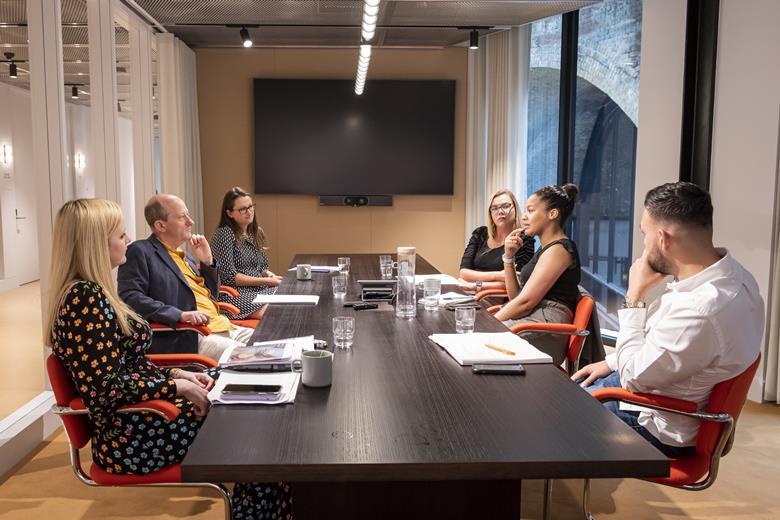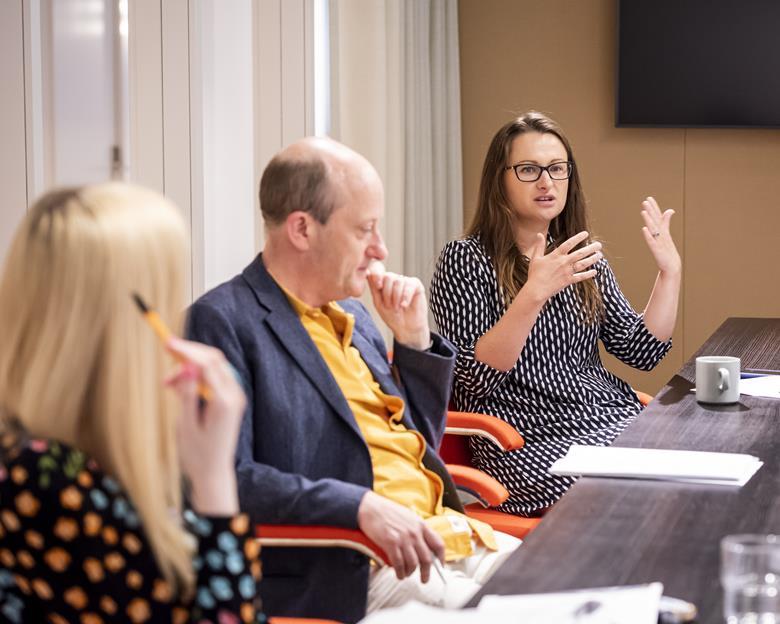Earlier this month, Yardi and Property Week brought together a panel of experts from across the residential sector to discuss the benefits of build to rent over traditional PRS, how operators are creating a sense of community and what major trends we can expect to see in the coming years.

Panel of experts
- Kate Dunning, senior manager, property marketing, Hines
- Tiffany Harrison, head of lettings, Leaf Living
- Hannah Marsh, co-founder, HomeViews
- Sebastien Simpson, operations manager, City & Docklands
- Georgie Drewery, senior account executive, Yardi
- Andrew Saunders, contributing editor, Property Week (chair)
Build to rent (BTR) is one of the fastest-growing subsectors of the residential market, and is often marketed around a seamless customer experience, great on-site amenities and a real sense of community for residents. But what exactly is it that tenants value most about BTR living, how can operators and developers build that all-important sense of community and how far does the reality match up to the hype?
HM: Last year at HomeViews we collected more than 3,500 verified reviews from BTR tenants across 200 developments, and we have recently published our 2022 National Build to Rent Report – we have a really good insight into the sector. There are some passionate views about what it’s like to live in BTR as part of a real community, and the value of on-site facilities – gyms are far and away the most popular facility.
But what comes through stronger for me are the fundamentals: that residents value feeling secure and well looked after above all. Having great facilities on site is exciting, but our data tells us that what residents really love about BTR are the basics, done well.
SS: BTR offers subscription living for the Netflix demographic – people who want things quick, fast and flexible. But in our surveys, amenities are less of a focus of our residents, but they do mention security and cleanliness, for example.
KD: What we are seeing at Hines is that the demographic that BTR appeals to is changing. Five years ago it may have been the young professionals who couldn’t afford to get on the property ladder, but who maybe could afford an extra £100 or £200 a month for the great facilities and service that were geared especially for that demographic. Now the appeal has to be a lot more universal – we’ve got to consider a wider audience: from retirement-age people and young families too.
GD: Tenants also value the flexibility of BTR – the fact that you can lease for three, six, nine or 12 months, for example. If you are in the traditional private rented sector (PRS), it’s not easy to lease for less than 12 months at a time.
BTR is still a relatively small part of the residential market in the UK, although growing fast. Are people’s expectations still coloured by their experiences in the traditional PRS and build-to-sell sectors?
SS: We have been quite shocked at how low people’s expectations are. They are blown away by the fact that we have an app, for example, even though that is now really an industry standard.
TH: Leaf Living is a single-family brand, and we are going into areas where there isn’t necessarily a product like this: our first site is in West Sussex and has 118 homes.
So we have to do some education to show the local community what single-family BTR is and what it means. Many people’s experience in the normal PRS is that you struggle to get repairs done and have to wait weeks to get a tap fixed, for example. So it’s important for us to have the technology in place so that we can provide the customer service our tenants expect from us.

BTR offers subscription living for the Netflix demographic – people who want things quick, fast and flexible
Sebastien Simpson
HM: I agree. People will say things on our reviews like: “My washing machine broke, and someone came to fix it the same afternoon.” It’s not something that many of them have experienced in the UK before and there is a real sense of delight about it.
KD: People can view BTR as a second choice to home ownership – that it’s better than traditional PRS but that they still ultimately want to own a home. What we are trying to deal with is how to tackle that stigma; to position BTR as a higher echelon of living with a sense of belonging and with amenities geared to a multi-demographic audience.
Can technology play a role in creating that sense of community?
KD: People can be lonely living in a new city or area – they don’t suddenly become part of a community just because someone has put up an events noticeboard. You have to work hard and use technology to help them. I worked with many BTR clients when I was on the agency side, and a common trend is investing in third-party technology that brings communities together through things like yoga, meditation and cookery classes. It’s all about wellness and a sense of belonging and homeliness.
The right technology can also make the whole rental process smooth and efficient for the customer. They get a single point of contact; they can go on a site visit and sign the contract and make their first payment while they are there, all through the same tool. The flexibility and ease of use that BTR offers is something that people don’t know enough about, but when they see it, it is a massive attractor.
What about from the developer’s or operator’s point of view?
SS: Technology has been vital to the success of our business at City & Docklands. We use Yardi for leasing, and for the property management side, too. Everything is done through the app. Not a single phone call gets made – it’s so easy to use. The app prompts tenants to add photos, videos and voice notes so when it gets to my property manager he knows exactly what the problem is.
You have to work hard and use technology to help people. It’s all about wellness and a sense of belonging and homeliness
Kate Dunning
It also helps us to generate extra revenue. Something we have just started doing is allowing people to book cleaners through our app. It goes to our property manager and a cleaner is assigned straight away. We didn’t know what the take-up would be but people see it on the app and it’s constantly coming through.
GD: Operators want to know, at the click of a finger, what is happening in their portfolio. We offer automated reports that can combine rent rolls, occupancy rates, tenant demographics and income statements – it helps them to keep on top of the data they need and to provide better information to their investors, too.
TH: Scale is really important. We’ve got five sites at the moment, but our pipeline is 5,000 units over the next five years. So we will quickly get to the point where we are managing 10 to 15 communities. For me, having efficient technology in the background on the leasing and management side of things as we scale is vital.
How important is having a strong brand in creating a successful BTR community?

SS: I’m a firm believer that if you look after the service, the brand will look after itself. When we created AWOL [A Way of Living, a City & Docklands BTR brand] four years ago, we hired a branding company and all sat in a room and did mood boards and everything, but in the end, we just made up our own logo, put an ad on Rightmove and we were leased up within 40 days. We have always had a clear vision for the AWOL brand, about what it stands for and what we wanted to deliver to tenants from day one – which is why we were able to do it ourselves.
But I do think branding will become more important as BTR grows and there are more operators to choose from in the same space.
At the moment, price and location are still the main drivers.
KD: At Hines, we’re currently investing in some research to understand how our BTR brand proposition can work across a more widespread market and demographic. Many markets – across Europe, but also in the UK, too – still don’t have much awareness or understanding of BTR. I think for the end user at present it’s more about explaining what BTR is as a concept.
GD: Hotel operators know about creating a simple and memorable brand. If I stay in a Premier Inn, I know there’s going to be a lot of purple and that I’ll have a buffet breakfast. A Hilton will probably have a lot of conference workspace. I think BTR can learn from this, and from retail, too. If you do your food shop in Waitrose or Marks & Spencer, you know you will be paying a little more but you expect a certain level and quality of produce. If you shop at Aldi or Lidl, you still expect good produce but you want to be making some savings, too. BTR is the same – it’s about targeting your audience and making a memorable impression on them.
What are the major trends in the BTR sector likely to be over the next year or two?
GD: Mixed-use portfolios – we are seeing a lot of purpose-built student accommodation (PBSA) operators moving into BTR and that will continue. Also retail-to-BTR conversions, like those announced by John Lewis. Retail stores often have prime locations in city centres and near to transport links, so I think that is something we will see more of.
KD: There’s going to be a lot more investment right across the UK and Europe, and that means the understanding of the BTR proposition – what BTR stands for – will grow. There’s also going to be a lot more technology – to support putting the customer first, and working hard in the background to streamline the customer journey and win their trust. I think it’s going to come on in leaps and bounds.